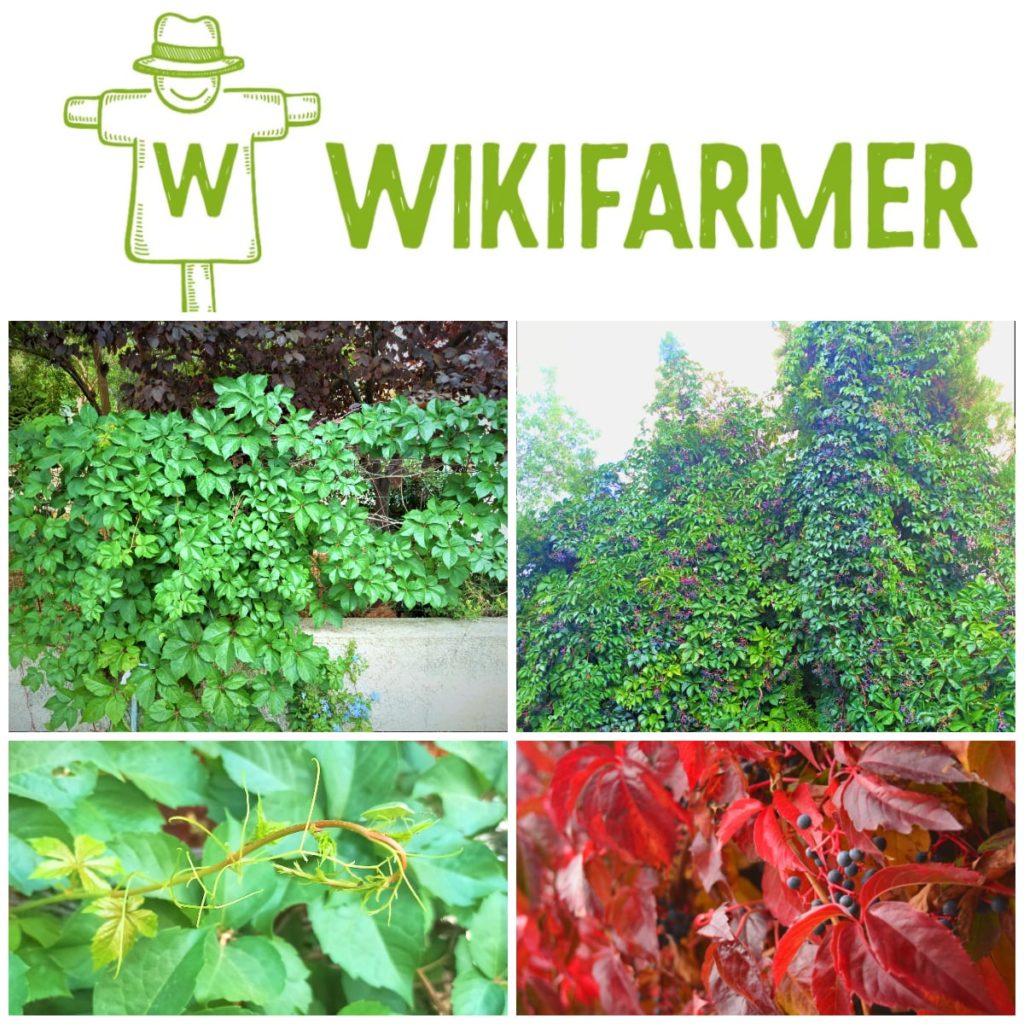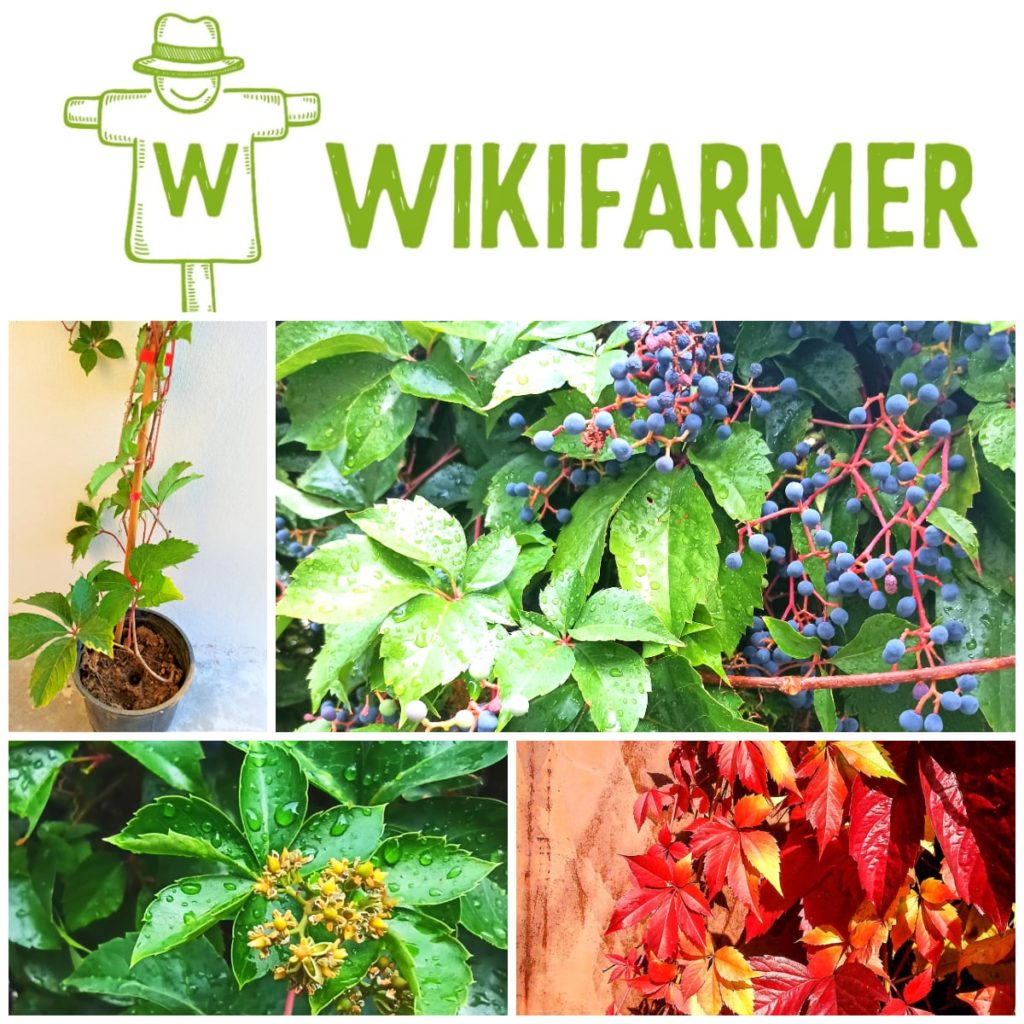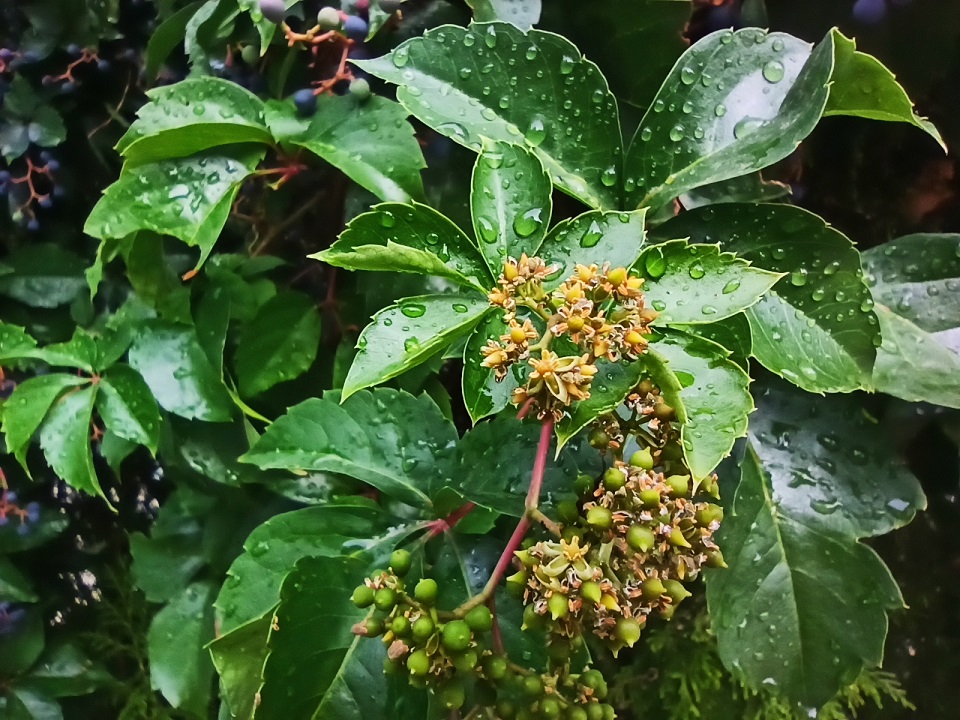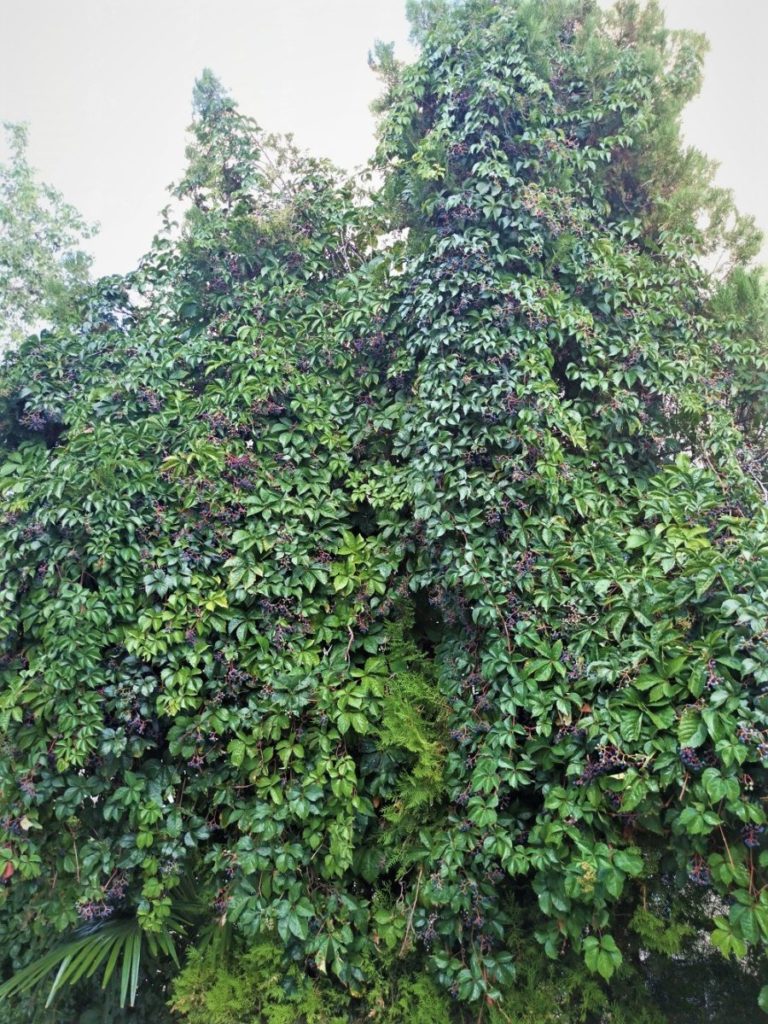Parthenocissus

This post is also available in:
This post is also available in:
![]() Français (French)
Français (French) ![]() Deutsch (German)
Deutsch (German) ![]() Nederlands (Dutch)
Nederlands (Dutch) ![]() हिन्दी (Hindi)
हिन्दी (Hindi) ![]() العربية (Arabic)
العربية (Arabic) ![]() 简体中文 (Chinese (Simplified))
简体中文 (Chinese (Simplified)) ![]() Italiano (Italian)
Italiano (Italian) ![]() 한국어 (Korean)
한국어 (Korean) ![]() polski (Polish)
polski (Polish)
Parthenocissus is a perennial deciduous climbing plant native to North America. It is a highly versatile plant that can live in our garden from 25 to 40 years or more with minimal care. It can also grow well in a pot. It is ideal for climbing on a balcony and serves as a natural fence offering isolation. In autumn, just before it sheds its leaves, the foliage turns red-burgundy. This coloring is exceptional and gives a stunning look in any place the plant grows. Gardeners usually exploit parthenocissus to cover monotonous or ugly walls or fences due to its strong climbing ability (especially two years after planting and on) and extremely dense foliage. The tendrils of the plant have adhesive pads that help it climb on walls. It can usually reach great heights by taking advantage of another tree or shrub (often a coniferous – Leyland), as demonstrated in the photo below.
However, attention is needed as virginia creeper can very easily drown neighboring plants by covering their foliage and thus limiting the photosynthetic ability of plants. Finally, it can be used as a ground cover plant for inaccessible places or sloping terrain.
The scientific name of the virginia creeper is Parthenocissus quinquefolia, categorized in the Vitaceae family. The word quinquefolia means “five leaves”. The plant can easily reach 20 meters (67 feet) height, while its width is 8 to 10 meters (26-32 feet). In regions with mild winters, the plant blooms from late spring to summer. As the plant matures over time, the green stems turn into woody branches making the plant more durable. Parthenocissus is very cold-resistant and can survive low temperatures.
Its fruit is a berry. Although it belongs to the same family as the grapevine, its fruit is toxic and therefore non-edible, the same as the leaves. It contains substances that will cause kidney damage and many other serious health problems in humans. Finally, contact of parthenocissus’s leaves with human skin, especially in autumn, can cause skin rush in some people.
 Planting parthenocissus in our yard
Planting parthenocissus in our yard
The best time of the year to buy a parthenocissus from a plant nursery is spring or autumn. The plants in the picture cost only 10 euros (12 dollars). Virginia creeper is highly versatile and can thrive even in extreme soil types/conditions (e.g., pH 5), while it can also grow in rocky terrains. Although it prefers sunny spots, it withstands partial shade. The branches of a mature plant grow independently, trying to ensure maximum exposure to sunlight. When choosing a place for our pots, we need to think it through since the plant has a very high growth rate and – as mentioned earlier – it can drown any neighboring ornamental plants and shrubs.
Advantages of Parthenocissus’ Pruning and way of Execution
Pruning is essential, especially in plants like parthenocissus with a great growth rate and strong climbing ability. We need to prune on time to control, shape, and give direction to a plant’s vivid vegetation. Otherwise, it can quickly get out of hand, “flood” the whole space, and remain firmly attached thanks to the rhizomes it creates. In the case of parthenocissus, we need to remember this: We should not be afraid to prune strictly. The main pruning of the plant takes place at the end of winter, just as it happens in the vineyard. Every pruning cut must be close to a healthy bud and at a proper angle. Parthenocissus welcomes (responds well) vigorous pruning. We can remove half or two-thirds of the annual vegetation and all the weak shoots from the base keeping only the healthy ones.
Parthenocissus welcomes (responds well) vigorous pruning. We can remove half or two-thirds of the annual vegetation and all the weak shoots from the base keeping only the healthy ones. The pruning performed during winter aims to maintain the desired shape and direction of plant growth. However, all year round, we can thin the canopy out to provide better airflow and remove any broken stems-branches, dried or infected shoots. In the latter case, we should never forget to sterilize our pruning shear (or any other tool used) by soaking them in an alcohol solution. Finally, if we notice that a shoot grows in an undesirable place or direction (e.g., it has started to cover a window), we remove it immediately, even during the summer.
 Planting in pots
Planting in pots
What we need to pay attention to when we plant parthenocissus in pots:
Buy, transplant, and choose the best location for placing a pot of a parthenocissus plant.
We start with the purchase of parthenocissus from the nearest plant nursery. As mentioned before, the plant using its tendrils can climb very high, on steep surfaces, even on a vertical wall. After buying the plant, we first need to transplant it into a larger pot, ideally made from terracotta. Unlike plastic, this material has pores and helps decrease excessive soil moisture harmful to our plants. Regardless of its material, we need to open holes at the bottom of the pot allowing drainage of the extra water within minutes. Finally, we choose potting soil that provides good drainage.
Parthenocissus’ Water Requirements – Irrigation Of Parthenocissus
The plant that grows in pots is less tolerant to drought than the one growing in the ground. Nonetheless, we should not overwater the plants. Even under very high summer temperatures, parthenocissus does not need watering every day. To be on the safe side, we can check now and then, with our hand, if the soil of the pot is completely dry and irrigate only then.
 Fertilization of parthenocissus
Fertilization of parthenocissus
Fertilization can help parthenocissus produce vivid vegetation and expand. It is essential, especially during the first two years after transplanting and for plants growing in pots. We can add fertilizer for acidophilic plants (e.g., NPK 13-6-15 with Magnesium and Boron) at least twice during the growing season (spring and summer). Τhe exact dosage of each fertilizer is reported by the manufacturer on the product’s label. In most cases, we can add three caps to a 3-liter watering can and water our pot with it.
Pruning
With pruning, we can guide the plant to grow in a specific direction and remove old, dry, and diseased branches. Usually, when we have a parthenocissus growing in a pot on our balcony, the plants have less space to climb and expand. As a result, we need to regularly cut the shoots to retain the shape and direction we want the plant to have. Throughout spring and summer, we can remove dry leaves and shoots. However, strict pruning should be performed until the end of winter – the beginning of next spring. The pruning shears we will use during the deadheading must be of high quality and accompanied by the corresponding certificates.
 Repotting every two years
Repotting every two years
We start with a medium-sized flower pot (larger than the small plastic one we bought the parthenocissus from the plant nursery). For example, we bought the plant in 9 liters pot, and we immediately transplanted it into a 30-liter one. Every two years, we can repot our plants in larger pots gradually, e.g., from the 30-liter flowerpot (usually 35-40 cm- 1.3 feet deep) to a 40-liter (48 cm – 1.6 feet deep and with 45 cm – 1.5 feet diameter).
Personal protective equipment
We need to take some precautionary protective measures when taking care of parthenocissus plants since their leaves can cause skin irritation-rush to some people. Having such a plant in our balcony or yard might mean we must consider buying special to protect our hands during gardening.









































































